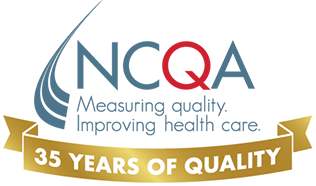A New Approach to an Old Problem: Tobacco
Sixty years after the Surgeon General first put warnings on cigarette packages, tobacco use remains a menace to public health.
Now a new quality measure is tackling the old problem of tobacco use in new ways.
Listen On:
About The Guests

Jules Reich is a Senior Healthcare Analyst in Population Health at NCQA, where she plays a leading role in advancing health care quality. She researches, develops and tests healthcare quality measure specifications, conducts comprehensive literature reviews and synthesizes clinical information to create recommended metrics for tracking health care quality. With deep experience in data analysis, program evaluation and stakeholder convening, Jules contributes to white papers, presentations and technical handbooks that shape policy and practice. Her background includes work with Medicare and Medicaid policy and regulatory guidelines, and she is passionate about improving primary care. Jules is also fluent in Spanish.

Grace Glennon is Director of Digital Quality Informatics at NCQA, where she applies her extensive experience in health outcomes research and measure development. Her work emphasizes healthcare quality, digital health and interoperability. Grace’s research interests and work focus span digital health innovation, federal health care payment models, health equity, population health and patient-centered outcome measures. Prior to specializing in digital quality measurement, Grace gained valuable clinical experience as a Registered Dietitian in acute care and long-term care settings. Her contributions to NCQA’s outcomes research is based on her background as a project leader at Yale University’s Center for Outcomes Research and Evaluation (CORE).
Episode Description
In this episode of Quality Matters, Jules Reich, NCQA Senior Health Care Analyst in Population Health, and Grace Glennon, NCQA Director of Digital Quality Informatics, discuss a new HEDIS® measure that modernizes tobacco use screening and efforts to help users quit.
The measure, Tobacco Use Screening and Cessation Intervention (TSC-E), replaces an outdated, survey-based approach. It also facilitates the transition to digital measurement by using the Electronic Clinical Data Systems (ECDS) reporting method to capture, track and help health plans act on data better and faster.
Listen to this episode to discover:
- Why It’s Time to Modernize Tobacco Measures. Learn why NCQA replaced its legacy tobacco survey measure, and how TSC-E aligns with updated clinical guidelines and evidence-based interventions.
- The Full Scope of Tobacco Use. Understand how the new measure covers a wide range of nicotine delivery systems—from cigarettes and vapes, to hookahs and dissolvable gels. Also learn why NCQA counts vaping in the measure of tobacco use, but not in the measure of tobacco cessation.
- The Power of Structured Data in Quality Improvement. Discover how the ECDS reporting method promotes standardized, sharable data across health systems, and why that shift supports more actionable insights, better patient care and data interoperability.
This conversation is key for quality leaders, digital health pioneers and public health champions who are interested in the modernization of quality measurement, advancing data standards and helping providers reduce tobacco use in the populations they serve.
But there’s also hookers and water pipes. There’s cigarillos, small cigars. There’s snuff, there’s dissolvable gels, orbs. There’s a lot of products to list.
This measure was developed with all of that in mind. We hope to institute a measure that recognizes the complexity of that, and that providers in different cultural contexts, different regions are able to use the same way.
Timestamps
(03:08) The Relationship Between Tobacco Screening and Cessation
(06:32) Who’s Included: Ages 12 to 98 and Beyond
(09:10) What’s Included: Vapes? It Depends.
(11:30) The Difference ECDS Reporting Makes
(15:24) The Future: From ECDS to Digital Quality Measures
